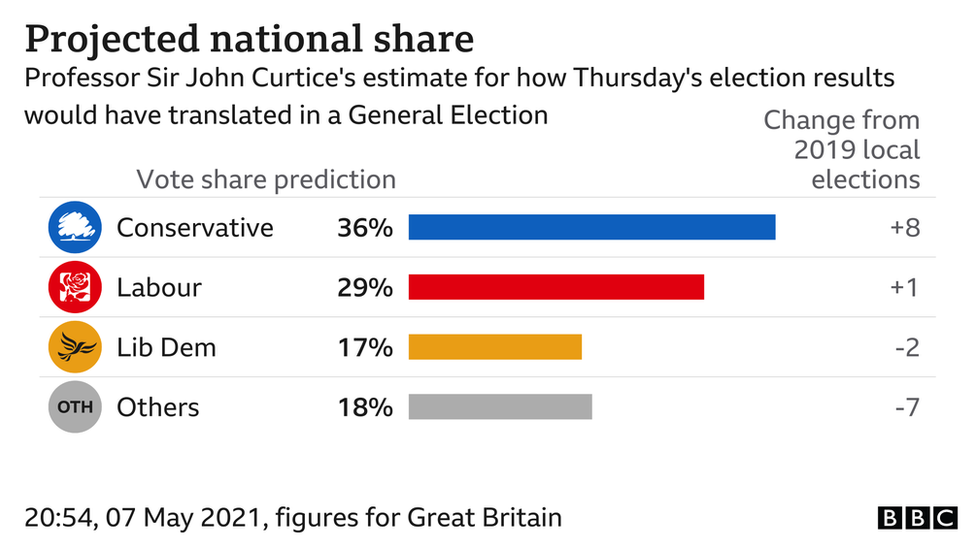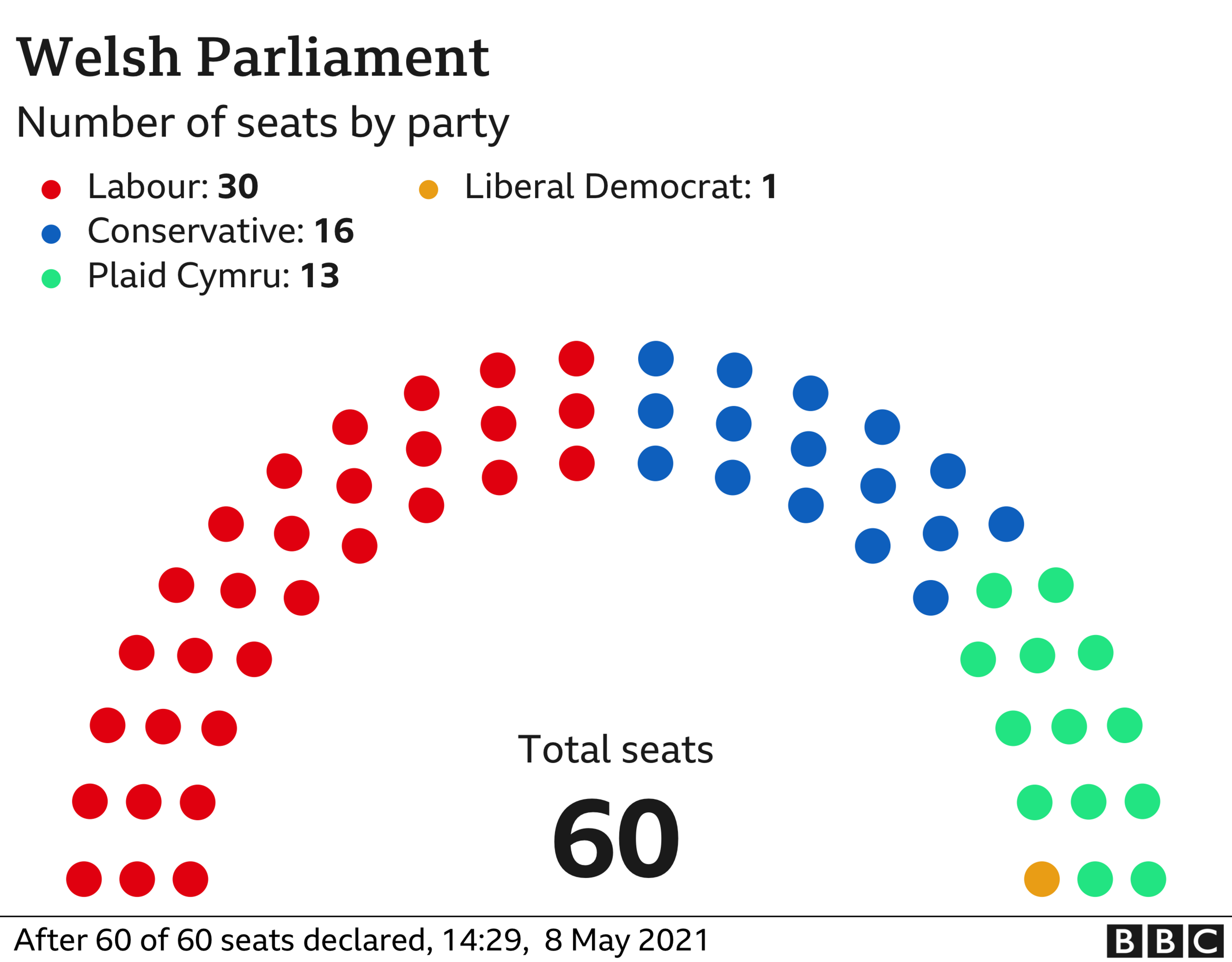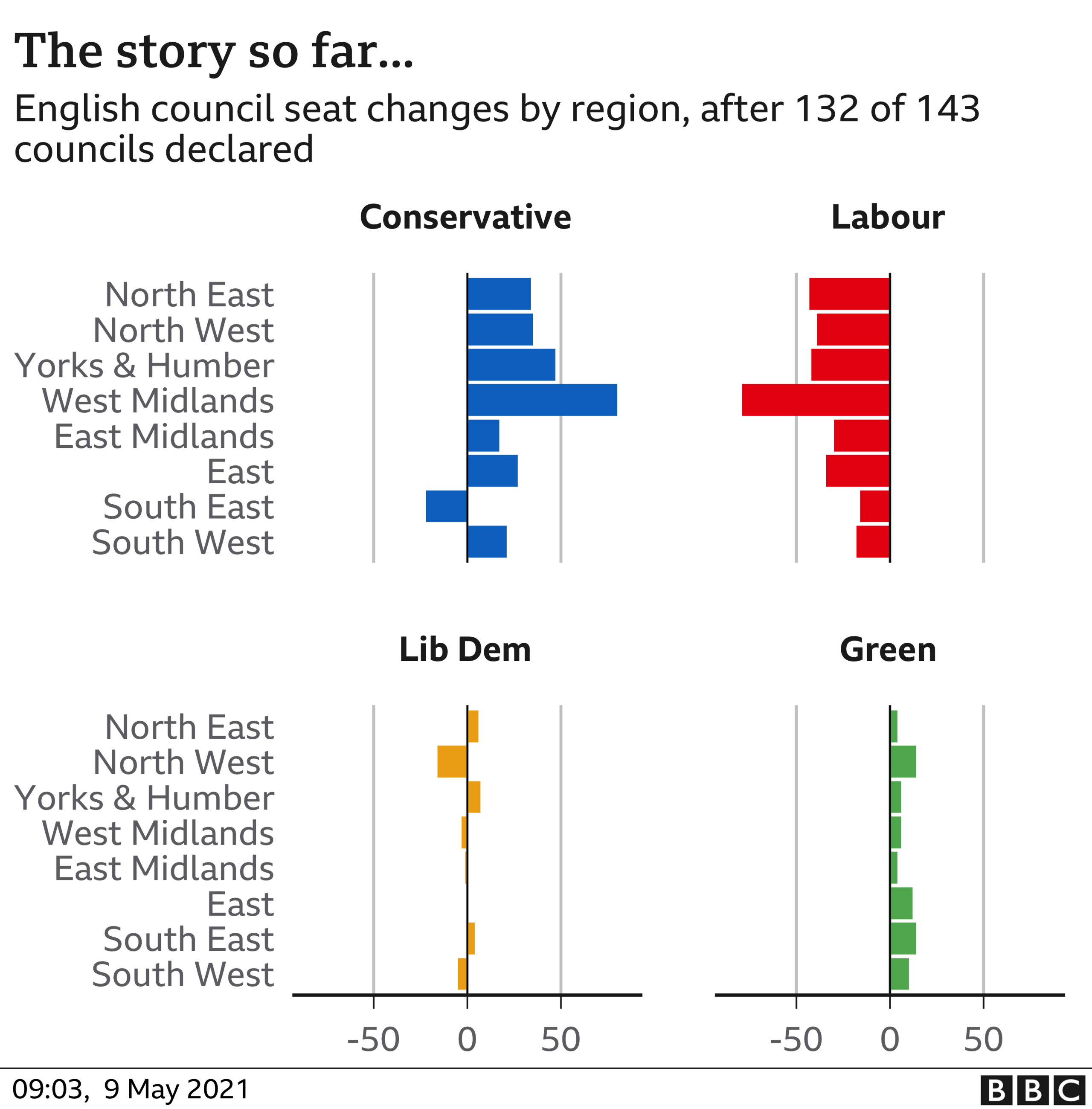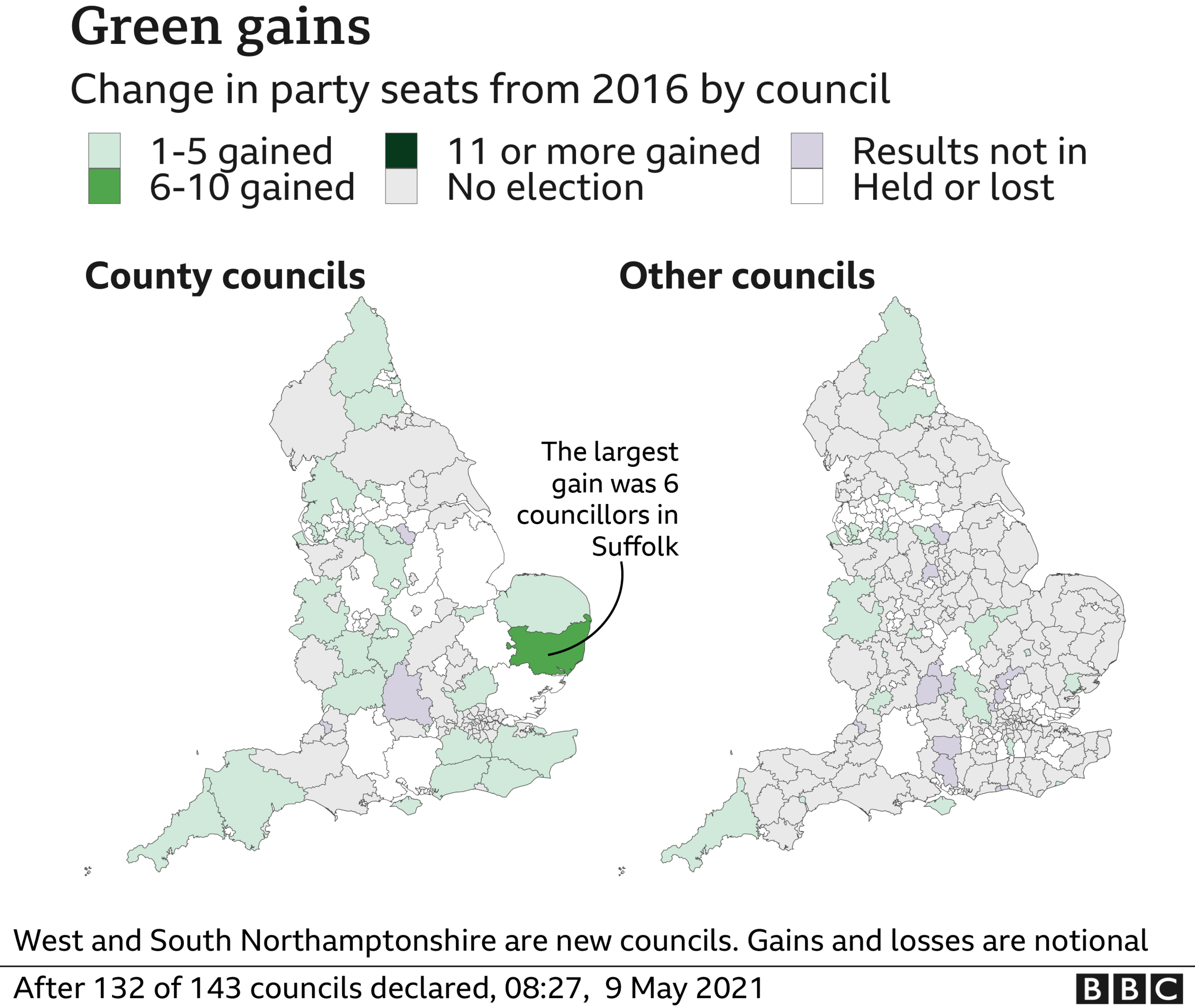Sir John Curtice: What the 2021 election results mean for the parties
- Published

Two key themes have emerged from the results of Thursday's elections declared so far.
First, ruling parties have done well, rewarded perhaps by voters who, thanks to the vaccine roll-out, believe the worst of the pandemic may now be over.
Second, Brexit continues to make a difference to how many people vote.
Conservatives gain in local elections
Voters often use local elections to give governments a kicking. Yet it is the Conservatives that have prospered in the English local council votes.
Around half of the seats being contested were in places where last year's local elections were postponed and thus where the last contest was held in 2016. At that time, the Conservatives and Labour were neck-and-neck in the polls.
The other half of the seats were in councils that were always due to have elections this year and were last contested just before the 2017 election, when the Conservatives were well ahead.
The BBC has collected detailed local voting figures across 1,200 wards, and these show the Conservatives' vote is up on average by eight points in those last fought in 2016. Labour support in these wards fell by three points.
Meanwhile, the Conservative vote was down by just a point in the wards where the contest was last held in 2017. In these areas Labour's vote did no more than edge up by a point.
What could happen in a general election?
According to the BBC's projection of the local election results into the equivalent of a Britain-wide share of the vote, the Conservatives' performance was the equivalent of winning 36% of the vote in a general election.
That makes it the party's second best local election results since it first regained power at Westminster in 2010.


Labour, on 29%, were as much as seven points behind the Conservatives. That might be less than the 12 point deficit at the 2019 general election, but still leaves the party's standing looking very similar to many a lacklustre performance under Jeremy Corbyn's leadership.
Labour's equal best in Wales
In Wales, where Labour has been in power since the devolved parliament first met in 1999, the party recorded a five-point advance on its share of the vote in 2016.
It now has 30 of the Senedd's 60 seats, matching its previous best performance.


Labour will be able to run the government for the next five years without needing to strike a deal with Plaid Cymru, who have found themselves overtaken by the Conservatives in the battle for second place - even though the party secured much the same share of the vote as in 2016.
Scotland and the independence question
Meanwhile, in Scotland, the SNP won a record 48% of the constituency vote, up a point on what the party achieved in 2016.
However, this proved to be not enough to deliver the party an overall majority in the Holyrood parliament. With 64 seats, the party ended up one seat short.
One reason is that Conservative and Labour voters, concerned about the future of the United Kingdom, have been willing to vote tactically to help stop the pro-independence SNP winning locally.
In seats that the Conservatives were defending against a second-placed nationalist challenge, the party's vote is up on average by three points. However, the Conservative vote fell by eight points where it was Labour who were defending a seat against the SNP.
Equally, Labour's vote increased by five points where they were facing a SNP challenge, but fell by six points where the Conservatives were fending off the SNP.
Overall, the election revealed how evenly divided Scotland is politically.
On the constituency vote, the three main parties that were backing Scotland staying in the UK won 50.4% of the vote. But on the list vote it was the three main parties that were supporting independence that were narrowly ahead with 50.1%.
Mayoral fortunes
The incumbent Conservative mayors in the West Midlands (Andy Street) and the Tees Valley (Ben Houchen) both turned the small majorities that they secured when first elected in 2017 into much larger margins.
Labour's Sadiq Khan was re-elected in London too, albeit with a slightly reduced majority.
However, the less high-profile Conservative incumbents in the West of England and Cambridgeshire lost out to their Labour challengers.
The Leave-Remain divide
Across Britain, the 2017 and 2019 general elections saw the Conservatives become increasingly strong among Leave voters, while Labour performed better among Remain supporters.
This was repeated in Thursday's English local elections.
In the wards last fought in 2016, there was a swing from Labour to the Conservatives of six points overall.
However, the swing was just one point in Remain voting areas, whereas it was as much as 11 points in the most heavily pro-Leave places.


Meanwhile, in pro-Remain places which last voted in 2017, there was a swing to Labour of three points. In Leave areas, there was a two-point move in the Conservatives' direction.
The Conservatives also performed more strongly in the more pro-Leave parts of London, Scotland and Wales too.
Brexit may have been done, but it is still leaving its mark on how people are minded to vote.
It demonstrates Labour is still losing ground in many of its traditional working class strongholds, many of which voted heavily to leave the EU.
How did the Lib Dems and Greens do?
The Liberal Democrats typically perform better in local elections than their current national poll standing. This was again true this year.
At 17%, the projection of the party's performance into the equivalent of a Britain-wide vote is broadly on a par with its performances in local elections ever since it entered into coalition with the Conservatives in 2010.
Meanwhile, the party's vote was down three points in Wales, and down a point in Scotland - the party managed to retain a toe-hold of one seat in Wales, but lost a seat in Scotland.


In short, the party is still doing no more than treading water following the dramatic collapse in its support in the wake of the 2010-15 coalition with the Conservatives.
For the Greens, the election brought some notable success.
The party secured record shares of the vote in both the Scottish Parliament (8%) and the London Assembly (12%) election.
Meanwhile, the party won as much as 11% of the vote where they stood in the local elections.
Although that was down two points on the party's record performance in the 2019 local elections, it suggests the party is now clearly England's fourth largest party.
John Curtice is Professor of Politics, Strathclyde University, and Senior Research Fellow, NatCen Social Research and The UK in a Changing Europe. Additional analysis by Patrick English, Stephen Fisher, Rob Ford, Eilidh Macfarlane, and Jon Mellon

MAPS AND CHARTS: Scotland's results so far
ENGLAND: Full election results, external
SCOTLAND: Full election results , external

